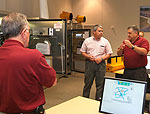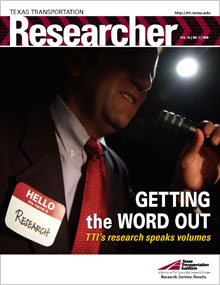
Recall the experiences from just about any year of your formal education. Most of the time, we observed passively while teachers tried to share knowledge with us. At other times, we were actively engaged and mutually involved in the process of learning. Each method worked, but certainly the latter produced the clearest understanding, the strongest retention and—most importantly—the best application of the knowledge we were gaining. That was true then, when the lesson involved language and math skills; it’s also true now, when the lesson involves the sharing of research knowledge.
It is that activity, the sharing of research knowledge, which ultimately leads to the innovation David Laney wrote about in the last issue of this publication. Knowledge sharing is the essential process—not unlike cooking, manufacturing or refining—that turns a commodity into a valuable and widely used product.
And just as in the case of learning about fractions and grammar, knowledge sharing is most effective when both parties are actively engaged in the learning process. That’s not as simple or easy as it may sound because those who conduct research and those who implement it have different responsibilities and priorities. Each group looks at problems and challenges through a slightly different lens. New knowledge, innovative products and enhanced processes must be of use and benefit in practical applications.
Through Texas Transportation Institute’s (TTI’s) efforts, transportation professionals everywhere benefit from that practical, real world approach to knowledge sharing in a number of ways, illustrated in part by the examples that follow.

The annual Transportation Short Course, co-hosted each year by TTI and the Texas Department of Transportation, provides an environment for more than 2,000 practitioners to gain a comprehensive update on a broad range of topics, including transportation policy, right-of-way issues, traffic management, construction and maintenance, freight movement, public transportation, rail, and other topics.
Conferences dedicated to specific transportation modes, such as aviation, ports and waterways, public transportation, and rail transportation, promote interaction between public and various industry sectors and provide forums to discuss emerging safety, technology and operational issues.
Webinars offer the opportunity to reach larger audiences more efficiently by employing the latest in communication technology, reaching around the world if necessary, without giving up direct interaction between presenters and participants.
Each of these applications share one thing in common: their effectiveness is dependent upon meaningful engagement. They go beyond telling and beyond showing. They rely upon involvement.
Think back again on your years in school. Chances are that those courses in which you learned the most and earned the highest grades were those in which you enjoyed the greatest involvement with your teachers and classmates. That’s a good way to run a classroom, no matter how old the student.
